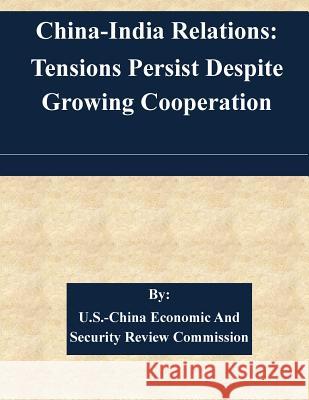China-India Relations: Tensions Persist Despite Growing Cooperation » książka
China-India Relations: Tensions Persist Despite Growing Cooperation
ISBN-13: 9781507585047 / Angielski / Miękka / 2015 / 26 str.
Despite growing bilateral cooperation between China and India, sources of tension in the relationship remain and in some cases are becoming more pronounced. In the security realm, continued occurrences of Chinese soldiers crossing into disputed areas of the China-India border and China's growing presence in the Indian Ocean are sources of friction in China-India relations. In the economic realm, India has a large trade imbalance with China, due to the distortionary effects of China's economic policy, Chinese competitiveness in export-oriented industries, and India's economic and institutional problems. Meanwhile, the 2012-2013 leadership transition in China and the 2014 election of Prime Minister Narendra Modi in India have increased potential for bilateral cooperation. The two countries seek to work together on a growing number of issues, including stability in Afghanistan and climate change. In addition, during Chinese President Xi Jinping's visit to India in September 2014, China pledged to invest in Indian industrial parks and high-speed rail infrastructure. China and India also are collaborating in multilateral forums and institutions, such as the summits of Brazil, Russia, India, China, and South Africa (BRICS) and the new BRICS development bank. Although both governments seek to reduce tension in the relationship, the potential for competition, miscalculation, and conflict between the two countries persists. For the United States, Prime Minister Modi's election and India's evolving strategic calculations have important implications for U.S. security interests, and may present opportunities for greater U.S.-India military and security cooperation. The United States also could cooperate with India to promote a greater balance of economic power in the Asia Pacific region, encourage improved market access in China, promote Chinese compliance with its World Trade Organization (WTO) obligations, and enhance global energy security. Although China and India have been strategic rivals since the mid-twentieth century, in recent years China has become India's largest trading partner and the Indian government is now more supportive of Chinese investment, which is limited but growing.1 Like many other Asian states, India faces the challenge of balancing its desire to expand economic ties with China with its apprehension about China's strategic intentions, particularly along the disputed China-India border and in the Indian Ocean. The two countries' leaders have sought to reduce bilateral tensions.2 The 2012-2013 leadership transition in China and the 2014 election of Prime Minister Modi in India present new opportunities for cooperation.3 However, despite cooperative initiatives and official statements emphasizing positive areas of the relationship,4 Asia's two largest rising powers, both of whom possess nuclear weapons, distrust each other, and each is sensitive to the other operating in its respective area of influence.5 In the security realm, major sources of tension in the relationship are the China-India border dispute, China's activities in the Indian Ocean, China-Pakistan relations, and Tibet. In the economic realm, India faces an increasingly unbalanced trade relationship with China, and the two countries are competing for access to energy supplies.
Zawartość książki może nie spełniać oczekiwań – reklamacje nie obejmują treści, która mogła nie być redakcyjnie ani merytorycznie opracowana.











